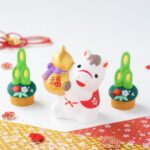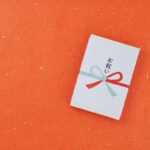
Mastering Comparisons in Japanese: より and のほうが
When learning Japanese, understanding how to make comparisons is essential. Two important words used for comparisons are より (yori) and のほうが (no hou ga). These terms are used to express preferences or compare two items. In this blog, we will break down their usage and look at examples to help you incorporate them into daily conversations smoothly.
Understanding より
より is used to indicate that something is “more than” another. It essentially marks the item that is being compared unfavorably, similar to saying “less than” in English.
Here’s the structure:
[Item A] より [Item B] = [Item B] is more [property] than [Item A]
Let’s look at a few examples:
- このシャツはあのシャツより安いです。
(Kono shatsu wa ano shatsu yori yasui desu.) This shirt is cheaper than that shirt. - 今日は昨日より暑いです。
(Kyou wa kinou yori atsui desu.) Today is hotter than yesterday.
In these sentences, より introduces the thing that is less in quantity or quality. Essentially, it shows that what comes after より is being used as the benchmark for comparison.
Using のほうが
のほうが is used to highlight the item that is preferred or has a higher degree of some quality. It is often paired with より to compare two things more directly.
Here’s the structure:
[Item A] より [Item B] のほうが [property] = [Item B] is more [property] than [Item A]
Examples:
- 夏より冬のほうが好きです。
(Natsu yori fuyu no hou ga suki desu.) I prefer winter over summer. - 犬より猫のほうが静かです。
(Inu yori neko no hou ga shizuka desu.) Cats are quieter than dogs.
The のほうが construction is perfect when you want to clearly emphasize your preference or express a quality that is more prominent in one item over another.
より and のほうが in Daily Conversations
To get a better feel for how より and のほうが are used in natural settings, let’s consider a conversation:
A: 海と山とどちらのほうが好きですか?
(Umi to yama to dochira no hou ga suki desu ka?)
Which do you like better, the sea or the mountains?
B: 山のほうが好きです。海より静かだからです。
(Yama no hou ga suki desu. Umi yori shizuka dakara desu.)
I prefer the mountains. It’s quieter than the sea.
Here, 山のほうが好きです clearly expresses the preference for the mountains, and 海より静か explains why, making use of より to set up the comparison.
Quick Tips for Making Comparisons
- Use より to indicate something is being compared unfavorably: A yori B means B is more than A.
- Use のほうが when you want to emphasize which is better or has more of a particular quality.
- When you use より and のほうが together, you can clearly indicate your preference in a comparison.
Practice Makes Perfect
Try making your own sentences using より and のほうが! Here are some prompts to get you started:
- Compare two foods you like.
- Compare the weather in two different seasons.
- Compare two activities you enjoy.
By practicing these structures, you’ll soon be comfortable making comparisons naturally in your Japanese conversations.
Happy learning, and keep practicing!
If you want to learn Japanese, improve your skills, or connect with native speakers and other learners, we can help. We offer one-on-one lessons, a supportive community, and on demand courses.
Book 1-on-1 lessons: https://nihongonana.com/lessons/
Join our community: https://nihongonana.com/community/
Access courses: https://nihongonana.com/courses/





Leave Comment